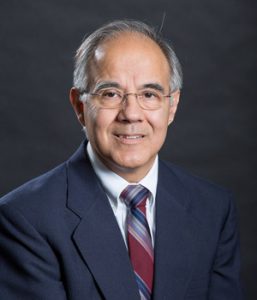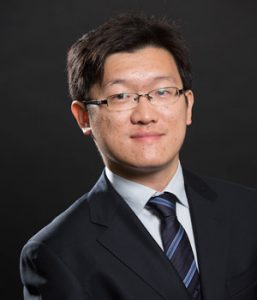What would the world be like without water? Disastrous, because every living thing on the planet needs water to survive. At the UWM College of Engineering & Applied Science, our civil and environmental engineering faculty know this very well and are keenly aware that our water resources are in danger, so they are working diligently to find ways to make water cleaner and safer.
Who are these water heroes? Let’s take a look.
Hector Bravo, Professor

Research focus on hydrodynamic modeling, transport of pollutants and heat in surface water and groundwater, two-phase flows and spectral analysis of hydrologic time series and climate variability.
- Currently working on reducing phosphorous to reduce cladophora algae
- Improving health and reducing water threats to the great lakes, Green Bay Ecosystem, Bradford Beach and Atwater Beach

Jin Li, Professor
Research focus on fate and transport of microbial pollutants in the environment, water and wastewater treatment, microbial biofilm, and hazardous waste treatment.
- Currently working with Dr. Bravo on a smart and connected energy/water microgrid for an Air Force project
- Together with Energy Tech Inc, Professor Li and three MS students including MD Abul Bashar worked on a project for MMSD on a biogas water wash purification method for wastewater.

Qian Liao, Associate Professor, Interim director of WEP
Research focus on environmental fluid mechanics, hydrodynamic-biogeochemical modeling, hydraulics and hydrology, mixing and turbulence in aquatic systems, and imaging-based flow analysis.
- Currently working on a project funded by MMSD to study the impact of beaver restorations on flood abatement in the Milwaukee river basin
- Past project with MMSD project on Green Roofs
- Measuring turbulence to keep Lake Michigan healthy
- Developed a whole-lake phosphorous model for Lake Michigan that ensures there is enough phosphorous in the lake to support phytoplankton, but not an abundance that would lead to nuisance algae
Yin Wang, Associate Professor

Research focus on environmental applications of advanced materials, occurrence, fate and treatment of emerging and recalcitrant pollutants, advanced technologies for water treatment and groundwater remediation, and environmental chemistry.
- Currently working on ridding drinking water and ground water of PFAS and arsenic
- Developing a water treatment system to rapidly remove and destroy waterborne pollutants from groundwater at Department of Defense, or DoD, sites.
- Mitigating antibiotic resistance in drinking water by understanding the impact of corrosion inhibitors and corrosion products
- Lead sensor development
- Treatment of legacy and emerging fluoroalkyl contaminants in groundwater
Who are they working with on this water-related research? The local, regional and national funding partners that make sure this important work happen include: Milwaukee Metropolitan Sewerage District (MMSD), the National Oceanic and Atmospheric Administration, the National Science Foundation (NSF), DoD Strategic Environmental Research and Development Program, the University of Wisconsin Sea Grant Institute, the Water Council, the Water Equipment and Policy Center (WEP), and the Wisconsin Department of Natural Resources (DNR). We are grateful for their support.